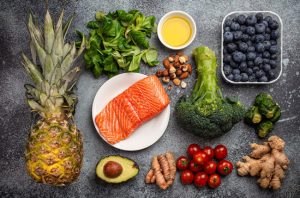The pescatarian diet, characterized by the inclusion of seafood and the exclusion of land-based animal meats, offers a variety of protein sources that allow individuals to meet their nutritional needs while aligning with their dietary preferences. Pescatarians rely on an array of seafood and plant-based protein sources to stay nourished. In this article, we will
The pescatarian diet, characterized by the inclusion of seafood and the exclusion of land-based animal meats, offers a variety of protein sources that allow individuals to meet their nutritional needs while aligning with their dietary preferences. Pescatarians rely on an array of seafood and plant-based protein sources to stay nourished. In this article, we will discuss these sources and explore how pescatarians ensure they get an adequate amount of protein in their diet.
The Protein Sources of Pescatarians
1. Fish and Seafood
Fish and seafood are the primary protein sources for pescatarians. They offer several advantages:
- Fatty Fish: Varieties like salmon, mackerel, and sardines are rich in omega-3 fatty acids, providing heart-healthy benefits and supporting brain function.
- Lean Fish: Fish such as cod, haddock, and tilapia are low in fat and calories but high in protein, making them ideal for those looking to maintain a lean diet.
- Shellfish: Shrimp, prawns, crab, lobster, and various shellfish are not only delicious but also protein-packed, offering a diverse range of flavors and textures.
- Squid and Octopus: These seafood options are a good source of protein and are widely used in Mediterranean and Asian cuisines.
2. Legumes
Legumes, such as lentils, chickpeas, and various types of beans, are plant-based protein powerhouses. They provide an excellent source of protein for pescatarians, along with dietary fiber, vitamins, and minerals.
- Lentils: These legumes are versatile and can be used in soups, stews, salads, and more. They are packed with protein and iron.
- Chickpeas: Popular in Mediterranean and Middle Eastern dishes, chickpeas offer protein and can be used in hummus, soups, or roasted as a snack.
- Beans: Black beans, kidney beans, and pinto beans are great sources of protein, and they can be used in a wide range of recipes, from chili to burritos.
3. Nuts and Seeds
Nuts and seeds are not only a source of healthy fats but also provide protein, making them a valuable component of the pescatarian diet.
- Almonds: Almonds are protein-rich and are a great source of healthy fats. They make for a convenient, portable snack.
- Walnuts: Walnuts offer protein, healthy fats, and a wealth of nutrients, making them a nutritious addition to various dishes and desserts.
- Chia Seeds: These tiny seeds are a protein powerhouse, often used in smoothies, puddings, and as an egg substitute in vegan baking.
- Flaxseeds: Like chia seeds, flaxseeds are rich in protein and can be ground and added to cereals or used as an egg replacement.
Image by: https://health.clevelandclinic.org/anti-inflammatory-diet/
4. Dairy and Eggs (Optional)
Some pescatarians choose to include dairy and eggs in their diet. These foods provide high-quality protein, vitamins, and minerals.
- Greek Yogurt: Greek yogurt is a rich source of protein and can be enjoyed on its own or as a base for smoothies and parfaits.
- Cheese: Cheese contains protein and can be used in a variety of dishes, from sandwiches to salads.
- Eggs: Eggs are an excellent source of complete protein and can be prepared in countless ways, from omelets to frittatas.
Ensuring Adequate Protein Intake
To meet their protein needs, pescatarians can follow these guidelines:
1. Variety is Key
Pescatarians should consume a variety of protein sources to ensure they receive a wide range of essential nutrients. Mixing up their seafood choices and incorporating various plant-based proteins is essential.
2. Pay Attention to Omega-3s
Including fatty fish like salmon, mackerel, and sardines provides essential omega-3 fatty acids. These fatty acids are beneficial for heart health and cognitive function.
3. Monitor Nutritional Intake
It’s important for pescatarians to keep an eye on their nutritional intake to ensure they are meeting their protein requirements. Tracking their diet with the help of nutrition apps or consulting with a registered dietitian can be helpful.
4. Include Protein in Every Meal
Protein can be included in every meal to maintain sustained energy levels and promote satiety. This can be achieved through a combination of seafood and plant-based proteins.
5. Be Mindful of Plant-Based Combinations
Pescatarians who choose to exclude dairy and eggs should be aware of plant-based protein combinations to ensure they get all the essential amino acids. Combining legumes with whole grains, for example, creates a complete protein source.

Photo by David Mackey: https://www.pexels.com/photo/close-up-photo-of-rice-and-shrimps-on-plate-2296430/
In Conclusion
Pescatarians meet their protein needs through a combination of seafood and plant-based protein sources. The diverse range of options ensures they receive essential nutrients, including omega-3 fatty acids, vitamins, minerals, and dietary fiber. The pescatarian diet is not only flexible but also sustainable, making it a well-nourished and balanced way of eating for those who choose to prioritize their health and the environment.


















Leave a Comment
Your email address will not be published. Required fields are marked with *